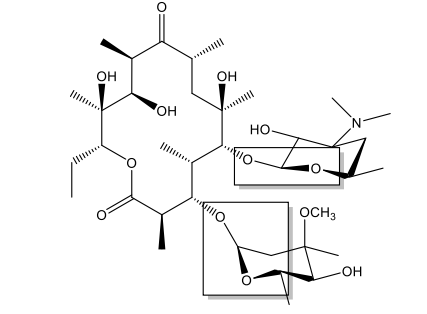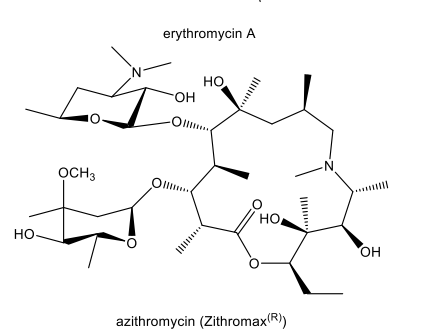Macrolide antibiotics all have large rings (macrocycle) in which an ester makes the ring; a cyclic ester is termed a lactone. One example is erythromycin A, first isolated from soil bacteria in the 1950’s. Over time, some pathogenic bacteria have developed resistance to erythromycin by evolving an enzymatic mechanism to cleave the macrocycle at the ketone. To counter this resistance, chemists modified the erythromycin structure to replace the ketone with an amine that the bacteria could not detoxify. This modified antibiotic, azithromycin, trade name Zithromax®, is one of the most prescribed drugs in the world for respiratory infections.


(a) Identify the lactone group in each structure that merits the classification as macrolides.
(b) Two groups are circled. What type of functional group are they? Explain
(c) Identify the ketone in erythromycin targeted by bacteria as the site for detoxification.
(d) Identify the amine in azithromycin. What type of amine is it?
(e) From what you know about the reactivity of ketones and amines, why was an amine a good choice to be the “chemical opposite of a ketone”?







